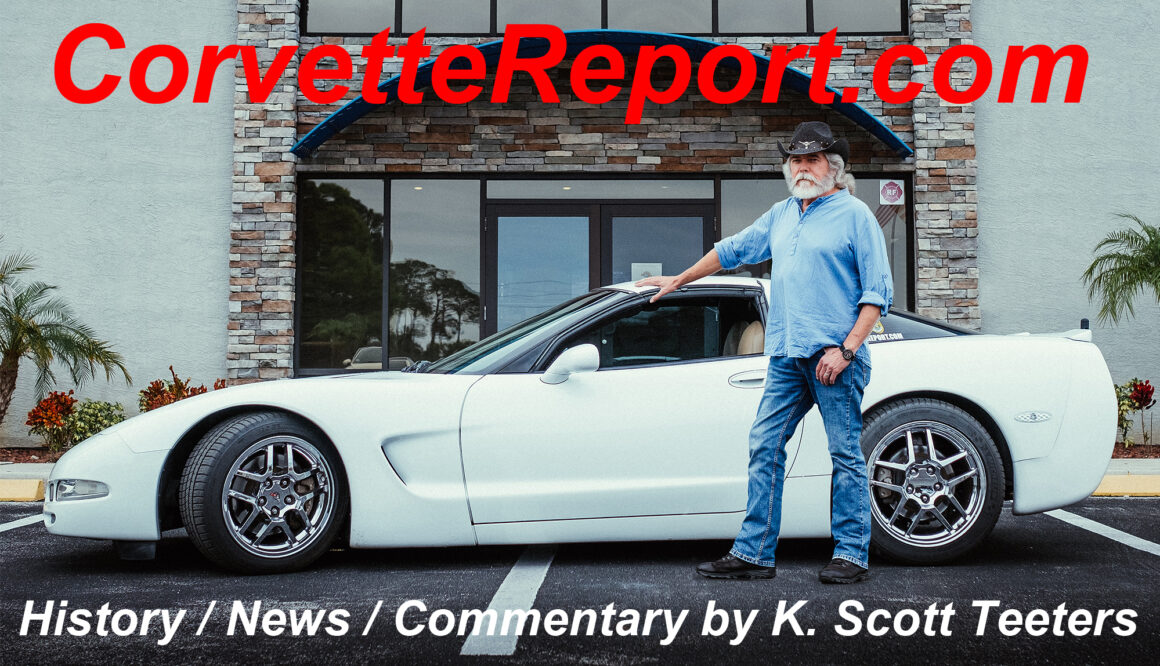Dateline: 5.1.13
The 2014 C7 Corvette Arrives… FINALLY!
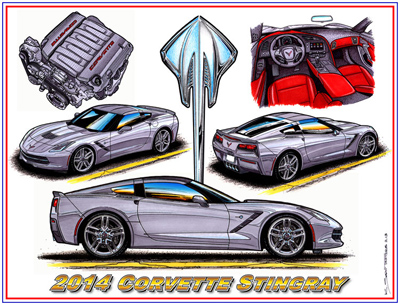
After what was without a doubt the longest, most tortuous buildup for a new generation Corvette ever, Chevrolet finally unleashed the 2014 C7 Corvette at the Detroit Auto Show on January 13, 2013. It was exhausting and I thought that Tadge Juechter, Tom Peters, and Ed Welburn would never stop talking. Finally, in a “TA-DA!” style, the red C7 came up and over a ramp, making it look like the car leapt on stage. It turned out that the spy photos and computer generated illustrations were close… but not quite on the mark. No, what we saw was better. But, I expected this, as the same thing happened before the C6 arrived – only we weren’t all on the torture rack for months on end.
This was the fifth new generation Corvette arrival I have seen, and it’s never easy. The ‘68 C3 wasn’t “Mako Shark” enough for many. The ‘84 C4 seemed too straight-lined and slab-like. The ‘97 C5 was called “too round” by some. The ‘05 C6 seemed like a crisped up C5 and was deemed a “C5.5” by a few. When it comes to Corvettes, you just can’t make everyone happy. However, each new generation, except for the C3, dished up stacks of impressive mechanical improvements, each taking the new generation to a new and higher level of performance. What’s not in question at all is that the Corvette engineers did a magnificent job with the C7. “Styling,” on the other hand, is a subjective thing. Designing a new Corvette body shape is the hardest job in Detroit. No other car has as much heritage and history to carry forward. The new design has to look “new” yet look like a “Corvette.” It’s NOT an easy task. It was very smart of Chevrolet to unleash the ‘14 Corvette in January ‘13. Production C7s won’t be available until the Fall of ‘13, so that leaves around nine months for the faithful to warm up to the new kid – taillights and all. Although, if and when the rear fascia is ever redesigned, few will miss the Camaro-inspired design. Some traditions shouldn’t die.
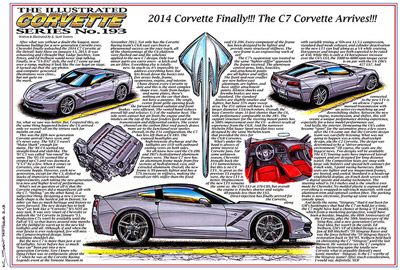 But the new C7 is more than just a set of taillights. Never before has so much “race car” been put into a new generation Corvette. Now I know why Doug Fehan was so enthusiastic about the C7 when he was at the Corvette Racing Legends event at the Simeone Museum in November 2012. Not only has the Corvette Racing team’s C6.R race cars been a phenomenal success on the race track, all of the shortcomings of the C6 platform were flushed out and the solutions applied to the new C7 design. Only two minor parts are carry overs – a latch and an air filter. Everything else is totally new. So much so, it’s impossible to address everything here. But lets break down the basics into five areas: body, frame, suspension, engine, and interior.
But the new C7 is more than just a set of taillights. Never before has so much “race car” been put into a new generation Corvette. Now I know why Doug Fehan was so enthusiastic about the C7 when he was at the Corvette Racing Legends event at the Simeone Museum in November 2012. Not only has the Corvette Racing team’s C6.R race cars been a phenomenal success on the race track, all of the shortcomings of the C6 platform were flushed out and the solutions applied to the new C7 design. Only two minor parts are carry overs – a latch and an air filter. Everything else is totally new. So much so, it’s impossible to address everything here. But lets break down the basics into five areas: body, frame, suspension, engine, and interior.
I have drawn every Corvette to date and this is the most complex shape ever. Aside from badges and name plates, there’s nothing on the car that does not have a purpose. The single, center front grille opening feeds the forward slanted radiator and front brakes – very efficient. The vented hood reduces overall lift and releases 1/3 of the radiator heat. The side vents extract hot air from the engine and the intakes on the top of the rear fenders feed cool air into transmission and differential coolers. The center channel on the carbon fiber roof panels draws more air to the functional rear spoiler. Overall, in the Z51 configuration, the C7 has less lift than a C6 ZR1. The exposed headlights are high-intensity discharge and the taillights are LED with outboard cooling vents on both sides.
We all know how cool the C6 Z06 and ZR1’s hydroformed aluminum frames were. The base C7 now has an aluminum frame made from five sections of hydroformed, cast, and extruded aluminum. Overall, the new frame is 99-pounds lighter and has a 57% increase in stiffness, making the overall car 60% stiffer than the fixed roof C6 Z06. Every component of the frame has been designed to be lighter and provide more structural stiffness. The new frame is an engineering work of art!
The C7’s suspension was treated to the same “lighter-stiffer” approach the frame received. The aluminum control arms, links, knuckles, and attachment points are all lighter and stiffer. The front and rear cradles are now hollow-cast aluminum, are lighter, and have stiffer attachment points. Bilstein shocks and Brembo brakes are now standard. The standard brakes are slightly smaller and lighter, but have 35% more sweep area. The Z51 option will have 1-inch larger diameter 13.6-inch rotors. Overall, the base Corvette stops 11-feet shorter than the C6, with performance comparable to the ZR1. The support structure for the steering mount points has a 500% improvement over the C6 – a direct result of experience from the C6.R. And the narrower Michelin Pilot Super Sport run-flat tires were designed by the same Michelin team that provided the tires for the C6.R Corvettes.
What’s under the hood is always of prime interest to Corvette fans. For some unknown reason, Chevrolet brought back the LT1 nomenclature, but this is no C4 LT1. As great as the previous LS engines were, the new LT1 is better. Displacement of the new LT1 remains the same as the C6’s LS3 at 376-CID, but overall the engine is 4-inches shorter and weighs 40-pounds less than the LS3. Direct-injection has finally arrived for the Corvette, along with variable timing, a ‘60s-era 11.5:1 compression, standard dual-mode exhaust, and cylinder deactivation so the new LT1 can loaf along as a V4 while cruising. Horsepower and torque are both expected to be rated at 450. While this is only a 14-horsepower increase over the C6’s LS3, the 1000-to-4000-rpm torque curve is on par with the C6 Z06’s 427 LS7. And connected to the new LT1 is an all-new 7-speed manual transmission with an active-rev-matching up and downshifting shifter. Between the new engine, transmission, and shifter, this will create a unique performance driving experience, especially for a base model performance car.
And lastly, the interior. Demeaning the C6’s cabin became “sport” for the automotive press a few years after the C6 came out. But the Corvette design team was carefully listening. What was not going to happen was a retro, dual-cockpit design, ala the C2 Corvette. The design was determined to be a “driver-oriented environment.” Of course, the seats are the biggest news. Two designs will be available. The GT/Touring seats have improved lateral support and are designed for long distance travel. The Competition Seats are snug with large side bolsters and special belt contours for 4-inch wide, 5-point racing harnesses. Both seats are lighter and use magnesium frames, are heated, and cooled. Standard is a heads-up windshield display, an 8-inch dash screen with a digital speedo and analog tachometer. The steering wheel is 14.1-inches and is the smallest ever made by Chevrolet. No molded plastic is exposed and everything is wrapped in soft-touch materials with real aluminum trim and optional carbon fiber. The parking brake is now electronic, freeing up some center console space.
And lastly the name, “Stingray.” Had it not been for GM’s bankruptcy that had the C7 on hold for a time, the C7 might have had a chance at being a ‘13 model, which from a marketing perspective, would have been a heyday. Imagine, the 60th Anniversary of the Corvette, plus the 50th Anniversary of the Sting Ray, and a new generation Corvette. Neat idea, but wasn’t in the cards. Ed Welburn, GM’s VP of Global Design is a big fan of Bill Mitchell’s ‘59 Stingray Racer and was the force behind the ‘59 Stingray Racer’s restoration back in ‘04-’05. Welburn held back on christening the C7 “Stingray” until the last moment. He wanted to see the C7 complete before bestowing upon the totally new Corvette what is arguably Detroit’s most iconic moniker – Stingray. Is the C7 worthy of the Stingray name? After much consideration, I would say, definitely, YES! – KST
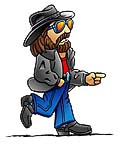
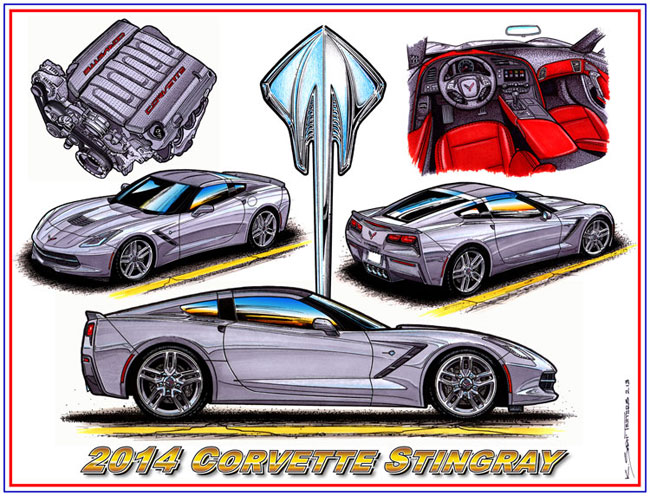
The above 11×17 Color Print is available for just $29.95 + $6.95 S&H. Each print is signed and numbered by the artist. You can order your with the secure PayPal button below, or by calling 1-609-714-0261, Monday through Saturday 10AM to 9PM Eastern Standard Time.
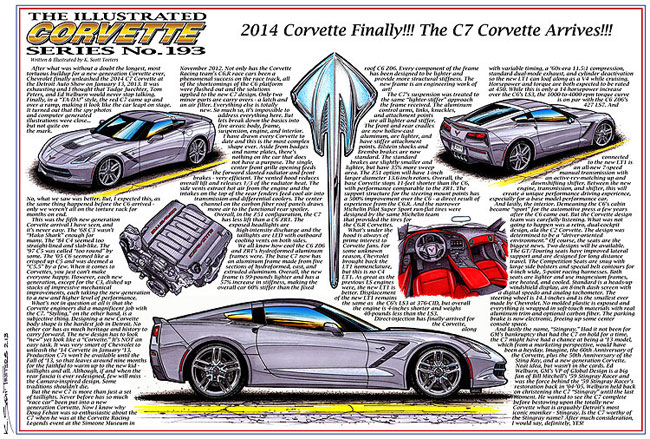 The above 11×17 Color Print is available for just $29.95 + $6.95 S&H. Each print is signed and numbered by the artist. You can order your with the secure PayPal button below, or by calling 1-609-714-0261, Monday through Saturday 10AM to 9PM Eastern Standard Time.
The above 11×17 Color Print is available for just $29.95 + $6.95 S&H. Each print is signed and numbered by the artist. You can order your with the secure PayPal button below, or by calling 1-609-714-0261, Monday through Saturday 10AM to 9PM Eastern Standard Time.
